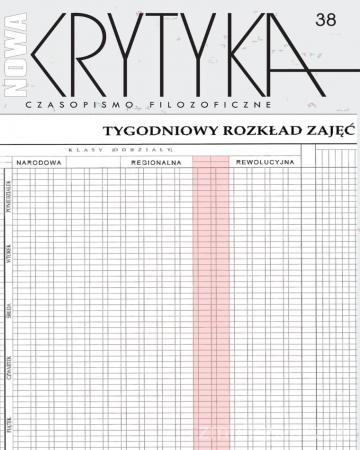Abstrakt
The article is an attempt to reconstruct and analyze the innovative and unconventional concept of allegory, which Walter Benjamin included in his papers about Charles Baudelaire. He never presented it in its entirety as a homogeneous or clearly and simply outlined. Ideas that interested the author of Passages were constantly reworked by him and drew its meaning from the specific contexts in which they were considered. Aesthetic and philosophical rehabilitation of the figure of allegory has been reached by Benjamin as a protest against the domination of symbolic thought. Allegorical work of art anticipates its aesthetic decay, historical fragility, while the symbolic denies this split and in the mythical gesture deprives tension of art criticism. Still, the allegory was perceived as outdated figure of speech with a completely conventionalized content. The first work in which Benjamin took up the theoretical and philosophical resumption of this dismissed by humanities figure was Ursprung des deutschen Trauerspiels (1928) book. In the Baroque mournful drama the allegory determined the loss of fixed meanings attributed to objects, the inability to recover the object of reference. In works dedicated to Charles Baudelaire Benjamin captures this figure in perspective of historical experience – combining it with the surreal experience of time and constantly referring that, what is past, to what is present, with sleep, awakening and recollection.




